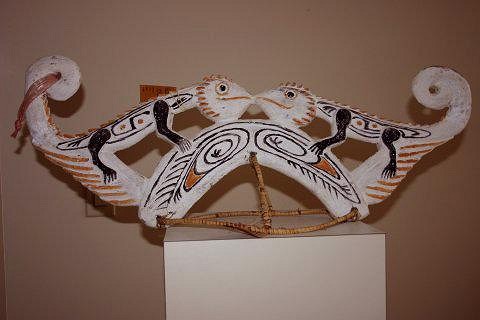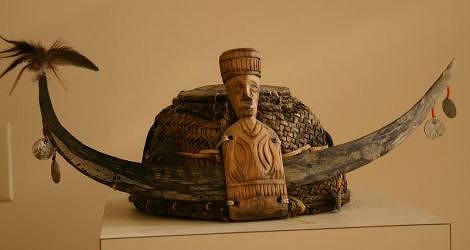Tiki Central / Collecting Tiki / Oceania, Etc: vendor of South Seas Art
Post #201329 by I dream of tiki on Fri, Dec 2, 2005 5:58 PM
|
IDOT

I dream of tiki
Posted
posted
on
Fri, Dec 2, 2005 5:58 PM
CHIEF’S HATS Asmat chief from Irian Jaya Toranja Chief's Hat, Tana Toranja, Sulawesi,Indonesia To this day, the Toraja traditionally live in small settlements perched on hilltops & surrounded by stone walls. Each village is composed of several extended families which inhabit a series of houses called Tongkonan, arranged in a circular row around an open field. In the middle stands a sacred stone or Banyan tree used for ritual offerings, and granaries (lumbung) face the dwellings. This chief’s hat is an extremely rare find. It can only be worn by the chief of the village or the sacred martial dancers who perform the ritual dances. It will make a fine decoration item as well as a fascinating conversation piece for the amateur or collector of rare prized artifacts."
"Toraja warriors wearing the songkok. This helmet has iron projections in the shape of buffalo horns meant to deflect blows." [ Edited by: I dream of tiki 2009-02-21 00:07 ] |



